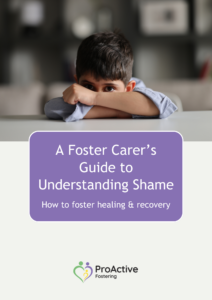
Discover practical, compassionate strategies that foster carers can use to reduce shame triggers, build trust, and encourage healthy growth—starting today.
Click the blue button below to Download the Guide
You’ve opened your heart and your home to a child who has been through more than most adults can imagine. You want to provide the stability, love, and support they desperately need. But sometimes, no matter how hard you try, everyday moments—like a simple request or a minor correction—can lead to intense emotional reactions. It can leave you feeling helpless, confused, and maybe even guilty.
THE PROBLEM: Shame Sabotages Connection
Children with a history of trauma often carry a deep sense of shame—the painful belief that they are unworthy or “bad.” Traditional approaches can unintentionally make things worse, triggering blame and fear. Worse still, children may lash out, withdraw completely, or people-please at the expense of their own identity. As a foster carer, you know how hard it is to guide them through these struggles without causing further emotional harm.
We Understand Your Challenges
We’ve helped countless foster carers navigate these tricky waters. Our team has consolidated insights from neurobiology, trauma-informed research, and the proven techniques of shame resilience (inspired by experts like Brené Brown) into a practical, easy-to-follow guide. We’re here to equip you with the tools and confidence to break the cycle of shame and set your foster child on a path to healing.
In this downloadable resource, you’ll learn:
Click the blue button below to Download the Guide
Our goal is to enhance quality of life for everyone with a compelling emphasis on the benefits of healthy, therapeutic relationships.